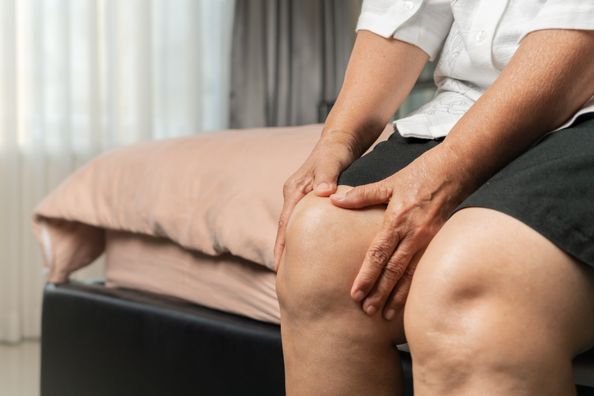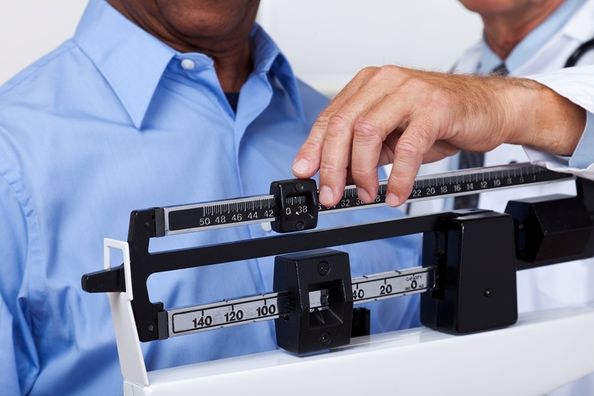As you get ready for the big day, perhaps you’re feeling a little nervous. Maybe you’re hopeful about the positive changes it will bring to your life. You imagine a future where you’re not in pain anymore, where you can move easily and do the activities you love.
You’ve got it circled on your calendar and you’re counting down the days. It’s almost here: the day of your joint replacement surgery.

Source: American Academy of Orthopaedic Surgeons
As your total or partial joint replacement surgery is approaching, there are some important steps you need to take to help you recover — especially when it comes to home safety.
This helpful checklist walks you through each room in your home to be sure it’s prepped for your joint replacement recovery.
Throughout Entryways,Stairs, and Hallways
Install sturdy hand railings: The first place to think about is the entrance to your home. Do you have to walk up any steps to get there? Be sure that you have secure hand railings on both sides of any steps outside for stairs inside of your home. These railings will provide the additional support you’ll need during your recovery period.
Create clear pathways: Talk to your doctor about any assistive devices you may need to use to get around during your joint replacement recovery, like a cane or a walker. While clear space in your hallways and rooms allows for easy movement, you’ll want to keep in mind the additional space a device might take up. Remove any clutter or shift any furniture that may get in your way or keep you from moving around freely.
Remove tripping hazards: Check out your floors for possible tripping hazards. Some items that you don’t think much about, like a throw rug, pet toys, or cords and cables, might be a much bigger danger when you’re less steady on your feet. Move any of these items out of the main pathways in your home.
If you are experiencing joint pain, have questions, or are ready to schedule your total or partial joint replacement surgery, call 630−790−1872 to speak with a member of our Orthopaedics team today.
In the Bathroom
Prevent slipping hazards: Pay special attention to your bathroom before your joint replacement surgery. Take extra precautions in the bathroom, as wet floors, towels, and rugs can pose a slipping hazard. Consider placing non-slip strips or a rubber mat inside the bath or shower to enhance traction.
Make shower items easy to access: Move the items in the shower so that they are easily within reach, because you may have less range of motion than usual. You may also want to think about other ways to make taking a shower easier, like using a handheld shower head or sitting in a shower chair.
In the Bedroom
Move your sleep space to the first floor: Moving up and down stairs can be tricky after joint replacement surgery — and this can make it especially annoying (and even painful) if your bedroom is on the second floor of your home. Before your surgery, set up a sleeping space for yourself on the first floor of your home that is easier to access during your first month or so. This might be a pull-out couch, reclining chair, or a temporary mattress downstairs.
In the Kitchen
Rearrange for convenience: After your joint replacement surgery, you may not be able to reach the bowl on the highest shelf — or the pan on the shelf below the stove. Before your surgery, spend some time in your kitchen to move your most often used items to waist height, like on the counter or table.
Prepare meals in advance: Make eating after your surgery easier by meal prepping ahead of time. You can make a large batch of overnight oats for breakfast or a big, healthy one-pot meal for dinner — both of which you can individually portion out and freeze. This will ensure that you have healthy options ready when you’re hungry.
In the Living Room
Choose the best furniture and seating: After joint replacement surgery, you’ll want to sit in a tall, firm chair that has arms to help you when getting in and out of it. This doesn’t mean you have to buy something new. If your existing chairs are low or hard, you can put a cushion, pillow, or folded blanket on the seat to make it more comfortable and easier to get out of.
Put frequently used items in reach: Set up your living room and recovery space to make your life easier, not harder. Move frequently used items, such as your medications, phone, laptop, or remote control, somewhere you can easily reach them. A small side table next to the chair you might be sitting in is a great option.
Joint Replacement Recovery With Duly Health and Care
The Duly Health and Care team is here to support you every step of the way throughout your joint replacement process — including your recovery.
From the moment you walk through our doors, our expert team is here to guide you through the scheduling process, provide you with education about your upcoming procedure, and answer your questions.
During your recovery, our physical therapists, nurses, and surgeons will be by your side, guiding you through exercises and therapies tailored to your needs. Our team will be there for you from beginning to end, ensuring that your journey toward a healthier, pain-free life is comfortable and safe.
Health Topics:








